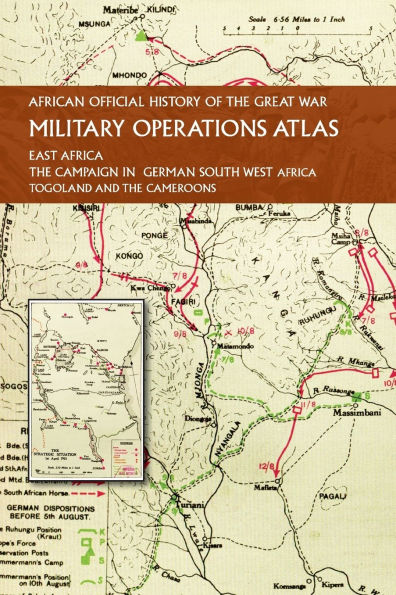Home
To Do the Work of Men: An Operational History of the 21st Division in the Great War
Barnes and Noble
Loading Inventory...
To Do the Work of Men: An Operational History of the 21st Division in the Great War in Franklin, TN
Current price: $79.95

Barnes and Noble
To Do the Work of Men: An Operational History of the 21st Division in the Great War in Franklin, TN
Current price: $79.95
Loading Inventory...
Size: OS
"...provides a worthwhile example of how Great War divisional history can – and should – still be done." — The NYMAS Review
The 21st (New Army) Division was formed in September 1914 as part of Kitchener’s Third Army (K3), comprising units mostly from Yorkshire, Northumberland, Durham and Lincolnshire. It was destined to spend its entire period of active service on the Western Front, taking part in almost all the major engagements. Only two weeks after having arrived in France, and with no battlefield experience, they were thrown into action on the second day of the costly Battle of Loos. Badly misused by the high command, it was no surprise the division underperformed.The 21st Division, from May 1916 under the command of the celebrated Major-General David ‘Soarer’ Campbell, managed to recover from this disastrous baptism of fire to achieve creditable success on three occasions during the Battle of the Somme, including the attack north of Fricourt on the first day. It was during this campaign that the original 63 Brigade was exchanged for 110 Brigade, the latter’s four battalions of the Leicestershire Regiment performing admirably at the Battle of Bazentin Ridge on 14 July. The division then re-entered the fray with the newly-introduced tanks in September as British Fourth Army captured the villages of Flers and Gueudecourt. The division experienced mixed fortunes in 1917 at Arras, on coming up against the formidable Hindenburg Line defenses, and during the latter stages of the Third Ypres campaign when defending Polygon Wood against fierce counter attacks before struggling forward through the October mud to assault the hamlet of Reutel.Between March and June of 1918, the 21st Division faced all three major German spring offensives: they put up a stout defence of the village of Epéhy on 21 March before conducting a lengthy fighting retreat that reduced its battalions to barely 200 men each. In April, they halted the German advance near Ypres during the Battle of the Lys and then, having been dispatched to a quiet sector to rest and reorganize, on 28 May the division found itself in the path of the Blücher offensive and was sent reeling as the Germans stormed across the Chemin des Dames Ridge.The hard-pressed 21st Division survived – barely – and recovered to play its part in the Hundred Days victories. It was involved in a dozen or so attacks through the summer and autumn, recapturing much of the ground ceded during the March retreat before extending its advance across the Selle and Sambre rivers. The division fought its last engagement four days before the armistice when they captured the village of Limont–Fontaine. The 21st Division had a busy and costly war, losing more men killed, wounded or missing than any other New Army division. It is no wonder that Sir Arthur Conan Doyle described the 21st Division as ‘that hard-bitten old scrapper’.
The 21st (New Army) Division was formed in September 1914 as part of Kitchener’s Third Army (K3), comprising units mostly from Yorkshire, Northumberland, Durham and Lincolnshire. It was destined to spend its entire period of active service on the Western Front, taking part in almost all the major engagements. Only two weeks after having arrived in France, and with no battlefield experience, they were thrown into action on the second day of the costly Battle of Loos. Badly misused by the high command, it was no surprise the division underperformed.The 21st Division, from May 1916 under the command of the celebrated Major-General David ‘Soarer’ Campbell, managed to recover from this disastrous baptism of fire to achieve creditable success on three occasions during the Battle of the Somme, including the attack north of Fricourt on the first day. It was during this campaign that the original 63 Brigade was exchanged for 110 Brigade, the latter’s four battalions of the Leicestershire Regiment performing admirably at the Battle of Bazentin Ridge on 14 July. The division then re-entered the fray with the newly-introduced tanks in September as British Fourth Army captured the villages of Flers and Gueudecourt. The division experienced mixed fortunes in 1917 at Arras, on coming up against the formidable Hindenburg Line defenses, and during the latter stages of the Third Ypres campaign when defending Polygon Wood against fierce counter attacks before struggling forward through the October mud to assault the hamlet of Reutel.Between March and June of 1918, the 21st Division faced all three major German spring offensives: they put up a stout defence of the village of Epéhy on 21 March before conducting a lengthy fighting retreat that reduced its battalions to barely 200 men each. In April, they halted the German advance near Ypres during the Battle of the Lys and then, having been dispatched to a quiet sector to rest and reorganize, on 28 May the division found itself in the path of the Blücher offensive and was sent reeling as the Germans stormed across the Chemin des Dames Ridge.The hard-pressed 21st Division survived – barely – and recovered to play its part in the Hundred Days victories. It was involved in a dozen or so attacks through the summer and autumn, recapturing much of the ground ceded during the March retreat before extending its advance across the Selle and Sambre rivers. The division fought its last engagement four days before the armistice when they captured the village of Limont–Fontaine. The 21st Division had a busy and costly war, losing more men killed, wounded or missing than any other New Army division. It is no wonder that Sir Arthur Conan Doyle described the 21st Division as ‘that hard-bitten old scrapper’.
"...provides a worthwhile example of how Great War divisional history can – and should – still be done." — The NYMAS Review
The 21st (New Army) Division was formed in September 1914 as part of Kitchener’s Third Army (K3), comprising units mostly from Yorkshire, Northumberland, Durham and Lincolnshire. It was destined to spend its entire period of active service on the Western Front, taking part in almost all the major engagements. Only two weeks after having arrived in France, and with no battlefield experience, they were thrown into action on the second day of the costly Battle of Loos. Badly misused by the high command, it was no surprise the division underperformed.The 21st Division, from May 1916 under the command of the celebrated Major-General David ‘Soarer’ Campbell, managed to recover from this disastrous baptism of fire to achieve creditable success on three occasions during the Battle of the Somme, including the attack north of Fricourt on the first day. It was during this campaign that the original 63 Brigade was exchanged for 110 Brigade, the latter’s four battalions of the Leicestershire Regiment performing admirably at the Battle of Bazentin Ridge on 14 July. The division then re-entered the fray with the newly-introduced tanks in September as British Fourth Army captured the villages of Flers and Gueudecourt. The division experienced mixed fortunes in 1917 at Arras, on coming up against the formidable Hindenburg Line defenses, and during the latter stages of the Third Ypres campaign when defending Polygon Wood against fierce counter attacks before struggling forward through the October mud to assault the hamlet of Reutel.Between March and June of 1918, the 21st Division faced all three major German spring offensives: they put up a stout defence of the village of Epéhy on 21 March before conducting a lengthy fighting retreat that reduced its battalions to barely 200 men each. In April, they halted the German advance near Ypres during the Battle of the Lys and then, having been dispatched to a quiet sector to rest and reorganize, on 28 May the division found itself in the path of the Blücher offensive and was sent reeling as the Germans stormed across the Chemin des Dames Ridge.The hard-pressed 21st Division survived – barely – and recovered to play its part in the Hundred Days victories. It was involved in a dozen or so attacks through the summer and autumn, recapturing much of the ground ceded during the March retreat before extending its advance across the Selle and Sambre rivers. The division fought its last engagement four days before the armistice when they captured the village of Limont–Fontaine. The 21st Division had a busy and costly war, losing more men killed, wounded or missing than any other New Army division. It is no wonder that Sir Arthur Conan Doyle described the 21st Division as ‘that hard-bitten old scrapper’.
The 21st (New Army) Division was formed in September 1914 as part of Kitchener’s Third Army (K3), comprising units mostly from Yorkshire, Northumberland, Durham and Lincolnshire. It was destined to spend its entire period of active service on the Western Front, taking part in almost all the major engagements. Only two weeks after having arrived in France, and with no battlefield experience, they were thrown into action on the second day of the costly Battle of Loos. Badly misused by the high command, it was no surprise the division underperformed.The 21st Division, from May 1916 under the command of the celebrated Major-General David ‘Soarer’ Campbell, managed to recover from this disastrous baptism of fire to achieve creditable success on three occasions during the Battle of the Somme, including the attack north of Fricourt on the first day. It was during this campaign that the original 63 Brigade was exchanged for 110 Brigade, the latter’s four battalions of the Leicestershire Regiment performing admirably at the Battle of Bazentin Ridge on 14 July. The division then re-entered the fray with the newly-introduced tanks in September as British Fourth Army captured the villages of Flers and Gueudecourt. The division experienced mixed fortunes in 1917 at Arras, on coming up against the formidable Hindenburg Line defenses, and during the latter stages of the Third Ypres campaign when defending Polygon Wood against fierce counter attacks before struggling forward through the October mud to assault the hamlet of Reutel.Between March and June of 1918, the 21st Division faced all three major German spring offensives: they put up a stout defence of the village of Epéhy on 21 March before conducting a lengthy fighting retreat that reduced its battalions to barely 200 men each. In April, they halted the German advance near Ypres during the Battle of the Lys and then, having been dispatched to a quiet sector to rest and reorganize, on 28 May the division found itself in the path of the Blücher offensive and was sent reeling as the Germans stormed across the Chemin des Dames Ridge.The hard-pressed 21st Division survived – barely – and recovered to play its part in the Hundred Days victories. It was involved in a dozen or so attacks through the summer and autumn, recapturing much of the ground ceded during the March retreat before extending its advance across the Selle and Sambre rivers. The division fought its last engagement four days before the armistice when they captured the village of Limont–Fontaine. The 21st Division had a busy and costly war, losing more men killed, wounded or missing than any other New Army division. It is no wonder that Sir Arthur Conan Doyle described the 21st Division as ‘that hard-bitten old scrapper’.

















